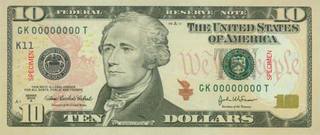As a potentially profitable opportunity presents itself, John will send you an alert with specific trade information as to what should be bought, when to buy it, and at what price. Read more
While the Diary of a Mad Hedge Fund Trader focuses on investment over a one week to six-month time frame, Mad Day Trader, provided by Jim Parker, will exploit money-making opportunities over a brief ten minute to three day window. It is ideally suited for day traders, but can also be used by long-term investors to improve market timing for entry and exit points.
As a potentially profitable opportunity presents itself, John will send you an alert with specific trade information as to what should be bought, when to buy it, and at what price. Read more
While the Diary of a Mad Hedge Fund Trader focuses on investment over a one week to six-month time frame, Mad Day Trader, provided by Jim Parker, will exploit money-making opportunities over a brief ten minute to three day window. It is ideally suited for day traders, but can also be used by long-term investors to improve market timing for entry and exit points.
Global Market Comments
November 7, 2013
Fiat Lux
Featured Trade:
(SELLING THE YEN, AGAIN), (FXY), (YCS), (DXJ),
(ENJOY THE DOLLAR RALLY WHILE IT LASTS),
(FXA), (FXC), (BNZ), (CYB), (FXE)
CurrencyShares Japanese Yen Trust (FXY)
ProShares UltraShort Yen (YCS)
WisdomTree Japan Hedged Equity (DXJ)
CurrencyShares Australian Dollar Trust (FXA)
CurrencyShares Canadian Dollar Trust (FXC)
WisdomTree Dreyfus New Zealand Dollar (BNZ)
WisdomTree Chinese Yuan (CYB)
CurrencyShares Euro Trust (FXE)
The Bank of Japan released the minutes of its previous meeting last night, so we now officially know what?s bothering them.
While the inflation rate has edged up to 0.7%, it is still miles (kilometers) away from its two year target of 2.0%. The 100% growth in the money supply promised by the end of 2014 is arriving on schedule. Since October, 2012, the central bank?s balance sheet has ballooned by an awesome 45%.
However, the desired effects on the economy are starting to fade. Real wages are still falling in September for a hair raising 16 months in a row, creating a deflationary effect on the economy that is huge. Prime Minister, Shinso Abe, is also shooting himself in the foot by raising taxes next April, and again in 2015.
It is a problem that is all too familiar to those of us here in the US. The BOJ can step on the accelerator all it wants. But as long as the Diet (their parliament) applies the brakes at the same time to keep the deficit hawks happy, the economy will go nowhere. Indeed, the recent data releases from Japan, white hot in the first half of the year, are starting to cool.
So the BOJ will do exactly as Ben Bernanke has done and throw more gasoline on the fire in the form of further, aggressive monetary stimulus. In layman?s terms this means it?s time to speed up the yen printing presses. That is the only way the central bank can offset the fiscal drag coming out of Tokyo. This is terrible news for the Japanese yen.
The BOJ is certainly going to pursue what is working. By engineering a collapse of the yen in the first half of 2013, they delivered a windfall profit for Japanese exporters. Dollar sales, when brought home are now worth a quarter more. That?s how Toyota was able to announce yesterday blockbuster earnings up 70% YOY.
Rising sales in an appreciating currency deliver a hockey stick effect on profits. The BOJ will take more of that, thank you very much.
This means that it is time to sell short the Japanese yen once again. When we peaked in March around the ?100 level in the cash markets, I thought that we could enter a sideways consolidation that could last as long as six months, since the recent move down had been one of the sharpest in foreign exchange history. That is exactly what we got. In recent months, the currency has almost been nailed to the 50 day moving average.
So I am taking this opportunity to return to a short position in the Japanese yen, the currency that everyone loves to hate. The December 20 expiration gives us a nice ?RISK ON? position in the run up to the yearend, which should be the correct way to lean. It also gives us a December position we can carry after our five November positions expire deep in the money next week.
I have written endlessly on the fundamental case for a weak yen for the past two years (for a link why you should sell short the yen, please click ?Rumblings in Tokyo?, here ?New BOJ Governor Craters Yen? , and finally here ?New BOJ Governor Crushes the Yen?.
From a technical point of view, what is unfolding here is classic chart reading 101. When you get a huge move over a short period of time, such as the 25% collapse in the yen that started in November, 2012, the consolidation and digestion period that follows can be very long. A rapidly declining 200 day moving average, now at $102 in the (FXY) should cap any short covering rallies.
Japanese portfolio managers and corporations have now had half a year to realize their windfall profits on their foreign investments in dollar denominated assets. That was generating hundreds of billions of dollar selling and yen buying that was supporting the beleaguered Japanese currency, no matter how lousy the fundamentals.
Thanks to the BOJ minutes, that support is about to end. Whoever has not sold their yen by now is in for the duration, or at least until the next 10% drop, which may be upon us. A breakdown to new lows could take us as far as ?110 in the cash market, or $88 in the (FXY).
For those who can?t play the options markets, better to just buy outright the ETF (YCS).
 Back Into the Short Side
Back Into the Short Side
Any trader will tell you the trend is your friend, and the overwhelming direction for the US dollar for the last 220 years has been down.
Our first Treasury Secretary, Alexander Hamilton, found himself constantly embroiled in sex scandals. Take a ten-dollar bill out of your wallet and you?re looking at a picture of a world class horndog, a swordsman of the first order. When he wasn?t fighting libelous accusations in the press and the courts, he spent much of his six years in office orchestrating a rescue of our new currency, the US dollar.
Winning the Revolutionary War bankrupted the young United States, draining it of resources and leaving it with huge debts. Hamilton settled many of these by giving creditors notes exchangeable for then worthless Indian land west of the Appalachians.
As soon as the ink was dry on these promissory notes, they traded in the secondary market for as low as 25% of face value, beginning a century?s long government tradition of stiffing its lenders, a practice that continues to this day. ?My unfortunate ancestors took him up on his offer, the end result being that I am now writing this letter to you from California?and am part Indian.
It all ended in tears for Hamilton, who, misjudging former Vice President Aaron Burr?s intentions in a New Jersey duel, ended up with a bullet in his back that severed his spinal cord.
Since Bloomberg machines weren?t around in 1790, we have to rely on alternative valuation measures for the dollar then, like purchasing power parity, and the value of goods priced in gold. A chart of this data shows an undeniable permanent downtrend, which greatly accelerates after 1933 when Franklin Delano Roosevelt took the US off the gold standard, banned private ownership of the barbarous relic, and devalued the dollar. Gold bugs have despised him ever since.
Today, going short the currency of the world?s largest borrower, running the greatest trade and current account deficits in history, with a diminishing long term growth rate is a no brainer. But once it became every hedge fund trader?s free lunch, and positions became so lopsided against the buck, a reversal was inevitable. We seem to be solidly in one of those periodic corrections, which began two weeks ago month ago, and could continue for months, or even years.
The euro has its own particular problems, with the cost of a generous social safety net sending EC budget deficits careening. Use this strength in the greenback to scale into core long positions in the currencies of countries that are major commodity exporters, boast rising trade and current account surpluses, and possess small consuming populations.
I?m talking about the Canadian dollar (FXC), the Australian dollar (FXA), and the New Zealand dollar (BNZ), all of which will eventually hit parity with the greenback. Think of these as emerging markets where they speak English, best played through the local currencies.
For a sleeper, buy the Chinese Yuan ETF (CYB) for your bank book. A major revaluation by the Middle Kingdom is just a matter of time.
I?m sure that if Alexander Hamilton were alive today, he would counsel our modern Treasury Secretary, Jack Lew, to talk the dollar up, but to do everything he could to undermine the buck behind the scenes, thus over time depreciating our national debt down to nothing through a stealth devaluation. (Click here for my interview with him, ?Riding with Treasury Secretary Jack Lew.)
Given Lew?s performance so far, I?d say he studied his history well.
Hamilton must be smiling from the grave.
We have been pretending that we?re too big to fail. We?re not too big to fail, you can jump off of a 90 story building and feel fine for the first 89 stories. It?s the sudden stop at the end that tells you you?re not.? said Tom Friedman, a New York Times columnist and author of Hot, Flat and Crowded.
As a potentially profitable opportunity presents itself, John will send you an alert with specific trade information as to what should be bought, when to buy it, and at what price. Read more
As a potentially profitable opportunity presents itself, John will send you an alert with specific trade information as to what should be bought, when to buy it, and at what price. Read more
Legal Disclaimer
There is a very high degree of risk involved in trading. Past results are not indicative of future returns. MadHedgeFundTrader.com and all individuals affiliated with this site assume no responsibilities for your trading and investment results. The indicators, strategies, columns, articles and all other features are for educational purposes only and should not be construed as investment advice. Information for futures trading observations are obtained from sources believed to be reliable, but we do not warrant its completeness or accuracy, or warrant any results from the use of the information. Your use of the trading observations is entirely at your own risk and it is your sole responsibility to evaluate the accuracy, completeness and usefulness of the information. You must assess the risk of any trade with your broker and make your own independent decisions regarding any securities mentioned herein. Affiliates of MadHedgeFundTrader.com may have a position or effect transactions in the securities described herein (or options thereon) and/or otherwise employ trading strategies that may be consistent or inconsistent with the provided strategies.












